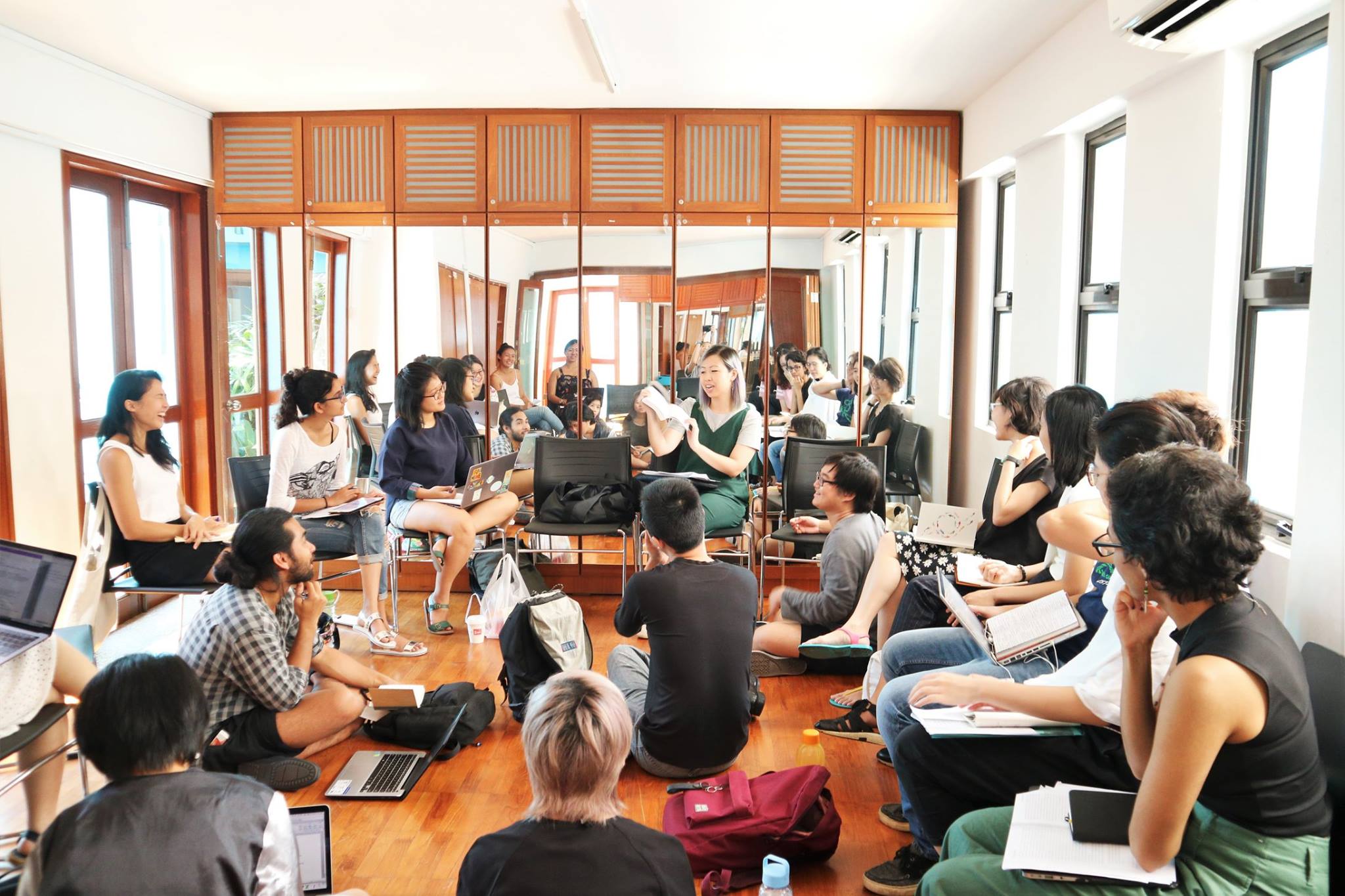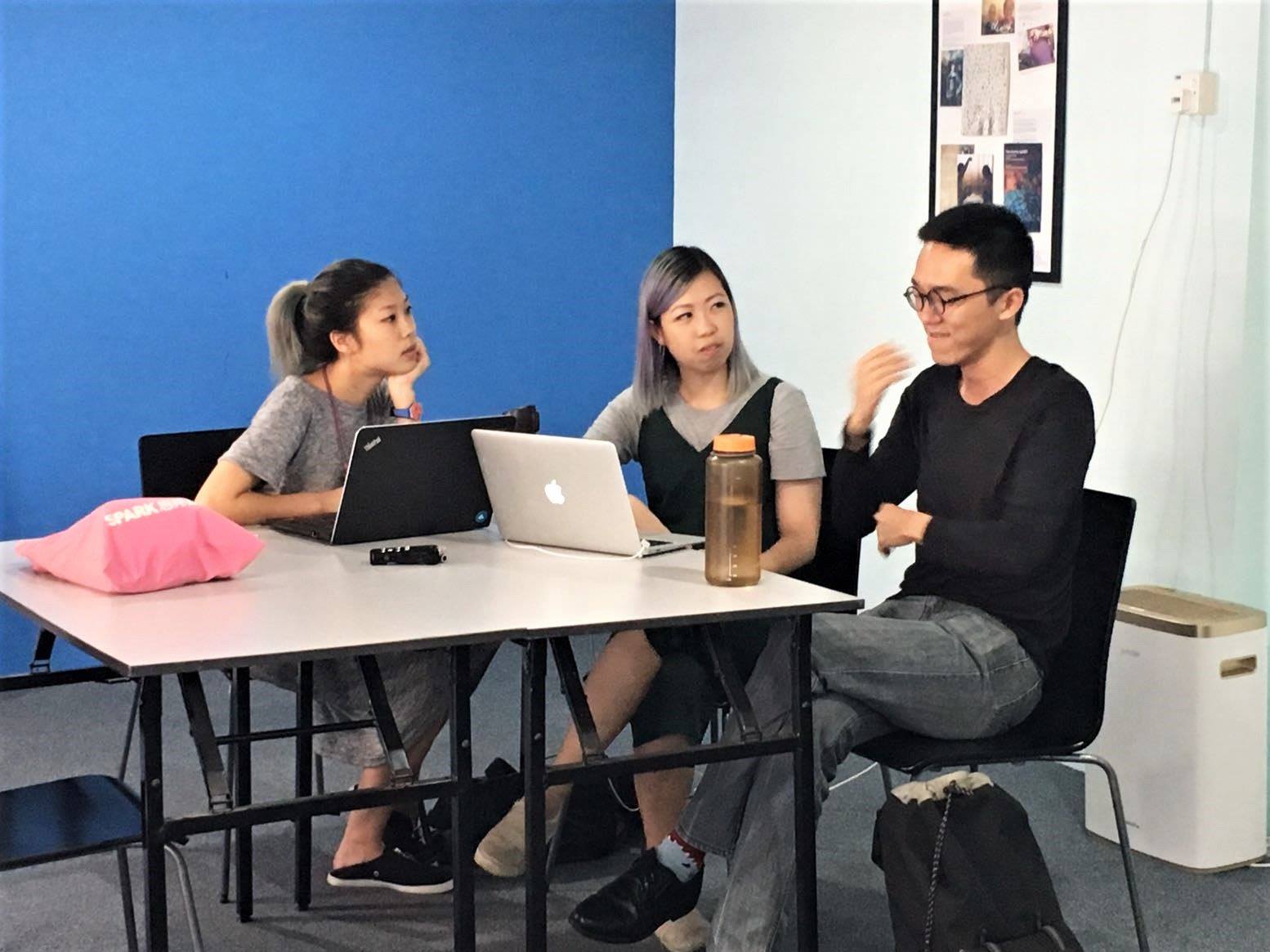Some of the Performance Making participants were invited to attend Corrie Tan's workshop-seminar on the role of the critic.

Day 6 Activities:
- P/W Workshop 5
- P/W One-on-One Clinics
The artist and the critic have always been in a love-hate relationship with one another. The tension is perhaps inevitable, given the fact that they serve very different purposes within the same ecosystem. In her POV Performance Writing (P/W) workshop today, Corrie Tan facilitated a thought-provoking discussion about the role of the critic from a more academic standpoint. The session was especially insightful as eight of the Performance Making participants were also in attendance, so both groups were given an opportunity to hear each other’s points of view.
Prior to this workshop, Tan had sent a few essays on arts writing and criticism to the participants to read through and analyse. Some of the ideas explored in these essays - which were written by the likes of Roland Barthes, Susan Sontag, William McEvoy, and Andy Horwitz - served as entry points and helped to inform the ways that the group approached the discussions today.
Tan made it clear from the start that the idea of the critic is constantly evolving with the times. She explained that the term “critic” was derived from a Greek word - krinein - which means “to judge”, and many critics from yesteryear did often take on this stance. She continued to say that being a critic can mean many other things these days - after all, with so many new platforms for writing and publishing, “print is no longer king”.
In the ensuing discussions, P/W participant Casidhe Ng cited McEvoy’s description of “an embodied, reactive spectator” as one role of the present-day critic, while Alfonse Chiu (also from P/W) brought up the idea of a critic as someone whose job is to tell their readers whether or not to go for a show.
However, Tan is also acutely aware that “the critic no longer holds the power”, as word of mouth and social media has become much more effective means of spreading the word about a production today. She then suggested that in the future, there may be more of a need for roles such as an embedded critic (who is attached to a particular company and takes on an almost dramaturg-like position), “a moderator for thoughtful discourse”, or a rapporteur or respondent at shows and festivals. She cited local arts writer Ng Yi-Sheng as an example of someone who is already beginning to do that in Singapore.
But some of the most enlightening and meaningful discourse took place when the P/M participants generously shared their personal experiences of encountering reviews about their own work.
For instance, dance artist Shanice Nicole Stanislaus said that she received a negative review for her first performance, and admitted that “it hurts, but as a practice it’s nice to see how you are seen by other people - [even if] it did take some time”. Another lovely moment that occurred was when actor Shannen Tan recalled how receiving positive recognition from a review of her first work encouraged her to keep on acting - and that the review in question was written by the same Casidhe Ng who is in the P/W group. For Ng, it was also reassuring and exciting to hear that his writings were read, and had such a wonderful impact on a practitioner.
For two hours, Tan and the participants covered a wide range of topics, including the different styles that critics write in; how a critic's background would influence his or her artistic tastes and experiences; Barthes' notion of how someone who’s reading a work would approach it very differently from someone who is writing about it; why so many theatre reviewers in Singapore stop writing after a few years; among others.
But at the end of the day, while there were no easy answers or solutions to most of the issues at hand our P/M and P/W participants did reach one mutually agreed conclusion: that there are no bad reviews as long as they are written in good faith.
"I am glad that the Performance Makers were present to share their opinions and experiences as arts practitioners. It was especially illuminating to hear about how they have dealt with reviews (both good and bad) of shows they have participated in," said Ke Weiliang. "While the room was not able to come to a consensus about the kinds of critical feedback that arts practitioners find useful, the discussion nevertheless was a timely reminder that the practice of arts criticism is – at the end of the day – is a two-way social process that can affect both artists and reviewers on a very personal level."

Ke Weiliang (right), one of the P/W participants, discussed a review he wrote with Corrie Tan (centre) and Gwen Pew (left).
After they digested those intriguing and complex ideas together over lunch, the P/M group headed off to their own workshop. Meanwhile, Tan began a series of 30-minute one-on-one clinics with each of the P/W participants, where she gave each of them individual feedback on an unedited review that they sent her. While we will not go into individual comments in the blog, this is a list of general points that Tan made to the writers:
- Use simple language wherever possible
- Use an active voice wherever possible
- Consider your word choices carefully to ensure that they reflect your intentions
- In general, it is better to state your point before describing the scene, citing examples, or explaining how it made you feel
- It is helpful to paint a “stage picture” for your reader to describe what you saw onstage - this is especially the case for dance performances
- When in doubt, frame the situation/critique from your own perspective
- Details of the performance are vital, but sometimes it’s good to also consider the wider framework - either the social/cultural/political context of the piece, its place within a festival, or its purpose as an adaptation
"I think it's very rare/difficult to have someone go through your writings and give feedback sentence by sentence, so I feel really privileged to be able to have the session with Corrie!" said participant Lim Si Qi. "It also helped to clarify my understanding of what goes into reviews."
"Corrie’s feedback was useful in challenging me to flesh out opinions that I subconsciously had at the back of mind, but did not managed to commit pen to paper to for whatever reason," said Ke. "And above all, I am grateful for her generosity in sharing her knowledge/experiences and being so patient in trying to help unpack doubts and queries that I had towards arts writing in general."
"Watching the process of her going through my writing / clarifying my ideas gave me a better understanding of how I should edit my work," added Amanda Leong.
The P/W and P/M tracks will all regroup together for the final three days of the programme from tomorrow onwards, as they gear up towards the POV Public Forum that will be taking place on Saturday 12 May. Find out more and register here.
Published: 10 May 2018